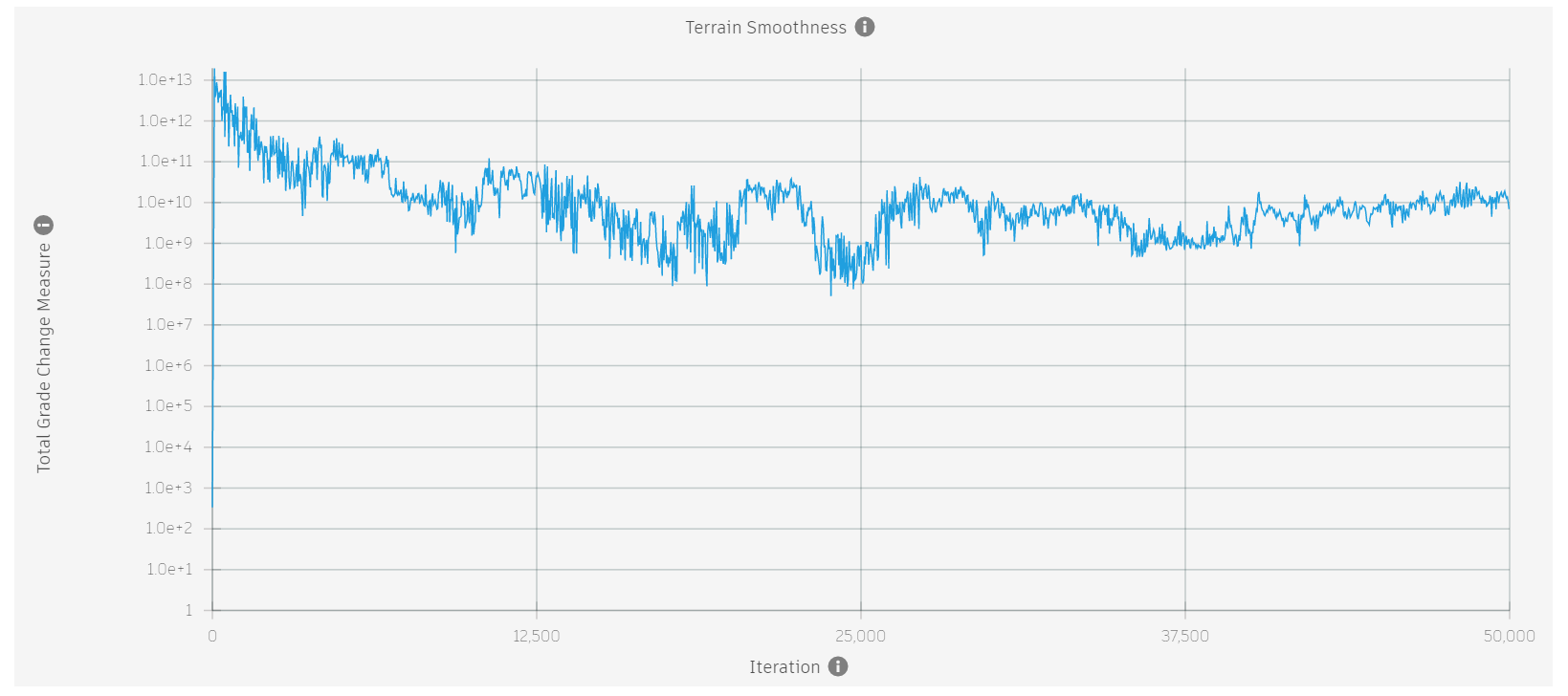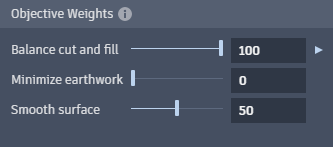Optimisation Objectives
Learn about optimisation objectives and how to specify them.
Learning Objectives
- Summarise that an objective function measures the cost of a feasible surface.
- Explore the three Grading Optimization objectives:
- total earthwork volumes
- balancing of cut and fill
- total earthwork volumes
- Observe that the solver prioritises constraints over objectives, that objectives can compete with each other and that they can be combined with the help of relative weights.
In Optimisation Constraints we discussed the input of an optimisation problem and how the solver changes this input to generate an optimised surface. We learnt that constraints restrict the infinitely many possible output surfaces to a more narrow constraint set of feasible surfaces.
The constraint set may still contain a very large number of surfaces. From all these feasible surfaces, we are primarily interested in surfaces that are beneficial to our project. An objective measures how beneficial a surface is. The measured value represents a cost that we want to minimise.
An objective is a quantity that we can measure on a given surface. In general, this quantity represents a certain cost that we want to minimise.
In Grading Optimization, there are currently three different objectives.
Terrain Smoothing
Terrain smoothing minimises the gradient changes among the triangles:
- Surface contours become smoother.
- The solver smoothly grades the surface up from lower points to higher points.

This can be applied to zones such as grass areas and may slightly improve the solving performance. If only feasibility is of interest, it can be turned off globally as shown below in Multiple Objectives.
Similar to the proximity measure for constraints, you can measure the terrain smoothness by summing up all of the gradient changes and viewing that value in the Convergence Plot under Terrain Smoothness:


Note that in the second picture, the terrain smoothness fluctuates and levels out. This may appear surprising, as we expect the solver to minimise that objective. It is true that the solver tries to minimise the objective, but its important to remember about constraints.
Constraints are always a higher priority than objectives. When the solver is able to improve a constraint, no matter how little, it will trade off one or more of the objectives for it.
Balance Cut and Fill
Balance Cut and Fill minimises the difference between the net volume of excavation and embankment, and a net earthwork volume value (7000 cu.ft in the image below). Enter both values in the Optimisation Settings dialog.

By default, the cut-fill value is zero and the solver aims at a perfect balance. As with the terrain smoothing, you can view the behaviour of the balance objective in the Convergence Plot.

Minimise Earthwork
Minimise Earthwork attempts to keep the excavation and embankment volumes as small as possible. Note that this objective is not concerned with balancing these volumes. Rather, it tries to keep the final surface as close as possible to the original surface.
Multiple Objectives
The objective examples above may compete with each other. Terrain smoothing requires that triangle surfaces get aligned nicely, but minimising earthwork requires that triangles remain in their original state. In order to instruct the solver how much weight each constraint should get, you place relative weight in the Optimisation Settings dialog.

When all objectives are set to zero, Grading Optimization switches to a feasibility only solver that may be faster in solving your optimisation problem.